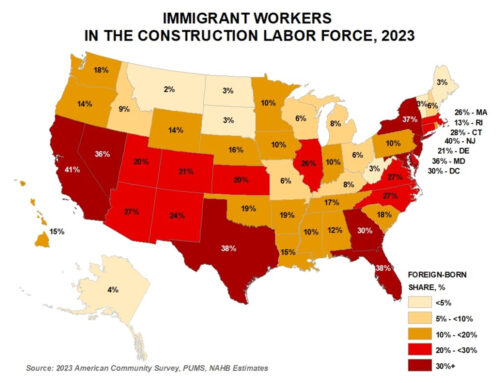There is a Difference featuring Ben Glunz, CEO Swatchbox
December 10, 2022
Have you ever seen a new product or services and said “Why didn’t I think of that? It makes so much sense.” Product samples are a staple of product specification for architects and designers. It is a major expense for manufacturers and often a pain in the rear to fulfill as timely as they are needed. Architect Ben Glunz recognized a need and built the solution to making product sampling easier for all parties. Ben created Swatchbox and it is catching fire. Join our conversation with Ben in this edition of There is a Difference.
My name is Ben Glunz. I’m the CEO and founder here at Anguleris Technologies. We’re the creators of BIMsmith and Swatchbox, which are platforms for architects to connect with building product manufacturers in assorted different ways.
My background is one of an architect, so being in practice years ago, obviously, designing buildings and seeing the needs that architects face as it relates to making material selections really led us to create the products that we now offer today, just from that direct experience.
So that’s a big part of our story and to this day our about half our team is from that background. So, we stay true to that even as we grow.
What is Swatchbox?
Sure. So Swatchbox is an online sample fulfillment program for building product manufacturers and architects to collaborate around sample acquisition and research. It’s part software for intelligent product selection and research, but then it’s part logistics. So we like to say it’s tech with a logistics wrapper, essentially, in that it’s blending the best of both worlds with software and technology data and analytics with sustainable logistics for manufacturers who are looking to offer more meaningful experience as it relates to their sample program.
So a lot of manufacturers sampling is just one of those big ticket budget line items that they just have always done. And therefore it kind of just flies under the radar from an innovation and improvement standpoint. And so what we’re doing is saying, “Look, we can all sample smarter.” A stat that we often quote is about 45% of samples that are ordered today never arrive at their attended intended audience.
If you were looking at that as a benchmark for any other marketing or sales program, you would fire that group. And so not a high bar to get over but there is a lot that can be done to improve the way we sample as an industry right now because it is absolutely crucial to the decision making process for an architect or for a designer, and also downstream with contractors and owners as we get into submittals and selections.
So our whole mission with Swatchbox is to sample smarter and to turn sampling from a black hole to a strategic sales and marketing initiative.
Where did the idea of Swatchbox come from?
So, it really came from my time as an architect prepping for a project, very often needing to put samples in front of clients or sometimes municipalities or contractors or whoever the stakeholders were at the time. I was a young architect working for other architects so I was the one having to make those calls.
Sometimes that took three and four days out of my week of just relentless hounding of reps. When can you get it to me? When can you get it to me? When can you get it to me? So many manufacturers don’t make that easy.
And in some cases they’re actually proud of that, that you have to chase their rep and their rep has to bring it down in their minivan to your firm because they use that as an opportunity for a touchpoint, which I can appreciate that needing to have that relationship and needing a so-called excuse to call on an architect.
But the reality is, when you take that interaction and multiply that across the dozens of other product selections and specifications that need to happen, that’s just not going to work. It’s not practical. It’s not feasible for an architect to do that. And a lot of times companies are not able to accommodate the quick turns that are needed for proper decision making in that context.
How does Swatchbox work?
So, like I said, we’re essentially a tech company with a logistics wrapper around it. So the first part is making a seamless research discovering selection process for an architect, designer, or contractor. Having software that just works, that you can count on, that it’s not cumbersome, it’s not hard to find. That if you want to, you can go to Swatchbox as an architect and order multiple vendors in one box that all come together, or you can order it through a manufacturing website.
We have both of those tools available to the A and D community, whether they want to order direct from the manufacturer or through our portal. That seamless software experience, it’s all cloud based and free to them, of course, is really the first part.
And then behind the scenes, we work and partner with manufacturers to efficiently receive, store, and catalog their samples in a very efficient way across our facilities that are all set up specifically for sampling, which is a key distinguishing factor. Certainly there are fulfillment companies out there that will do sample fulfillment, but they’re not focused on samples. And if they are focused on samples, they’re certainly not focused just on the building industry.
So we’ve got a very specific group of customers in that we work exclusively with building product manufacturers. So what that enables us to do is really be experts at how to handle material samples and make that something that we’re continuously improving. And so we’re warehousing those samples, the order comes through from our software, and then we’re able to ship that the same day, and then we guarantee that it’ll arrive to you in under two days. And so much of the country that ends up being a next day scenario, but at the worst it would be a two day shift.
So right there you’ve already crossed over a good slug of what the industry is able to provide. In fact, in our study, only 5% of the samples that were ordered in a study of a hundred manufacturers arrived in under five days. So if you’re an architect waiting to make decisions, or having a client meeting, that’s just not going to cut it.
And expectations have shifted. In a post Amazon Prime world, expectations have shifted and where once five or six days might have slid by that’s no longer going to cut it. And so we’ve built that system. We’re located in Chicago, so we have great strategic positioning to be able to service the market across multiple localities. And so from there, then from a manufacturer standpoint, they’re able to track and really understand where their samples went, how they converted.
We often say that it’s basically a black hole, you know, have no idea where your samples went or anything like that, but it’s one of your most expensive marketing pieces. And so we’re shining a light into that abyss to understand exactly what’s going on from a data and analytics standpoint.
How are Swatchbox and you making a difference?
Sure. First and foremost, we’re in service of the architecture and design community. So those folks, like the job I used to have, that have their time and effort just sucked out of … the wind sucked out of them in endless busy work and ordering samples and doing the research. We’re streamlining that process, so even if you’re just working with the sole source manufacturer, it’s already streamlined and saving them those hassles and being able to give them credibility back when they have a deadline.
Our deadline is your deadline or, excuse me, your deadline is our deadline in terms of being able to take a deadline from an architect and be able to nail it. That’s credibility for those people. So we’re serving in that way.
We’re enabling better product selection decisions, which ultimately contributes to a better built environment from our perspective. And that sounds sort of flowery, but the reality is there’s only so much decision making that can take place on a cell phone or a computer screen.
And our buildings are 3-D, we live in them, we touch them every day. So if you’re going to make a multimillion dollar product specification decision, having a sample in your hand when you’re doing that is always a good idea.
Further still, on average, we see about four brands go into a box when it’s ordered through the Swatchbox platform. So we’re able to reduce carbon footprint in terms of shipping, in terms of packaging, and in terms of overall time and effort spent by the architect or designer. And so instead of four boxes, you’re getting one.
We once had a manufacturer that we ordered from and it was a piece of tile and it came wrapped in bubble wrap. And so for fun, we decided to measure how much bubble wrap that was, and you’ll never believe it, but it ended up being 75 square feet of bubble wrap that that particular manufacturer had chosen to put around that piece of porcelain tile.
And so our packaging is all designed with protecting the sample, obviously, but then also being efficient with those resources and reducing waste because reducing waste is something that everyone in the industry can get behind regardless of where you’re coming from. No one wants to see garbage getting hauled off to a landfill. So reducing waste in both the architect’s time and resources, but then also in terms of the physical footprint.
How important is your experience and that of your team in the success of Swatchbox?
Yeah, I think it’s not just mine, but our whole team coming from that background and understanding that we once were the end user. And then also adding additional folks coming from different sides of the industry, whether that’s from being a building product manufacturer or industry associations.
Understanding the actual process from a very real first hand standpoint, you can’t replace that. You can’t substitute that with a private equity type mindset or a, “Hey, I think I want to disrupt the construction industry.” You hear that all the time. “We’re going to disrupt this, we’re going to disrupt that.”
I much prefer the word evolve or assist or augment because nobody needs to be disrupted. I mean, we hear a lot about that, but at the end of the day, if you’re in the industry and you are a part of it, you’re going to be able to have a lot more impact from within than trying to come in and break a bunch of glass.
There’s certainly a time for that with certain things, certain workflows that are too far past their due date. But a lot of positive change can also just come from working in the industry and bringing that firsthand knowledge to the table.
What’s next?
That’s a great question. We do get asked that a lot. For us, our whole mission at Anguleris is to make it seamless for design professionals and manufacturers to work together. So you never know where we’ll turn up next, but essentially we’re just looking to break down those barriers and build bridges between those two groups. And so the more we can interconnect the different tools that are available to do that, that’s where we’re looking.
So as I mentioned, our other brand, BIMsmith, has really pioneered the way manufacturers use them to reach their audience from a digital modeling standpoint. We’ve also partnered with MasterSpec, the AIA three part specification tool. So integrating there with BIM and specifications and samples. We’ve got a lot of other great partners around sustainability. And we acquired modeler.com back in January, which is an inspirational architectural photography site that helps manufacturers tie back actual products that were used in real projects.
And so we’re really excited about finding different ways to tie all these different workflows around material selection to essentially make it a superpower for the architects and designers who have this task and this responsibility. Because at the end of the day, you can design a beautiful building, but if you don’t spec and source the correct materials or the right materials for that job, it could turn out to be a nightmare. It could be a very ugly building. It could be a very unhealthy building. It could be a very unsustainable building.
So material selection matters and making that research second nature, making that not tedium for these design pros is really what we’re all about. So enabling a better built environment. So as we pursue that, you never know where we’ll pop up next.
Thank you, Ben. You are making the connections between architects, designers, and manufacturers seamless by making sampling smarter.
Watch the conversation with Ben on the Draper DNA YouTube channel by clicking HERE.





